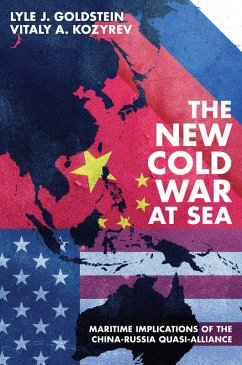The New Cold War at Sea exposes the growing maritime partnership between China and Russia, revealing how their coordinated naval strategies—from the Arctic to the Pacific—threaten U.S. maritime dominance. Drawing on rare Russian and Mandarin sources, the authors offer a timely, eye-opening look at a global shift in sea power. In early 2025 the Chinese and Russian fleets conducted the third in a series of trilateral naval exercises with Iran. Just prior, the Chinese Coast Guard, operating alongside the Russian Coast Guard, entered the Arctic for the first time. This China-Russia quasi-alliance is reshaping the global naval power balance, challenging U.S. naval supremacy through close and continuing collaboration. Russian assistance has propelled China’s aircraft carrier program, modernized its destroyers and submarines, and delivered world-leading missiles and autonomous vehicles, posing a threat to U.S. allies such as Japan and the Philippines. The maritime implications of this alliance extend beyond the Indo-Pacific, touching all the world’s oceans. The New Cold War at Sea reveals crucial, generally unknown details of China-Russia maritime cooperation, from the Arctic to Southeast Asia, to Africa, and to Latin America. Based on a wealth of underutilized Mandarin and Russian-language sources, authors Lyle J. Goldstein and Vitaly A. Kozyrev provide an objective assessment of Chinese and Russian maritime symbiosis. By presenting unique evidence relating to the naval global balance as well as related policy proposals, the book aims to spark a vital national debate over the future of American maritime strategy in the emergent multipolar world.
Bitte wählen Sie Ihr Anliegen aus.
Rechnungen
Retourenschein anfordern
Bestellstatus
Storno








